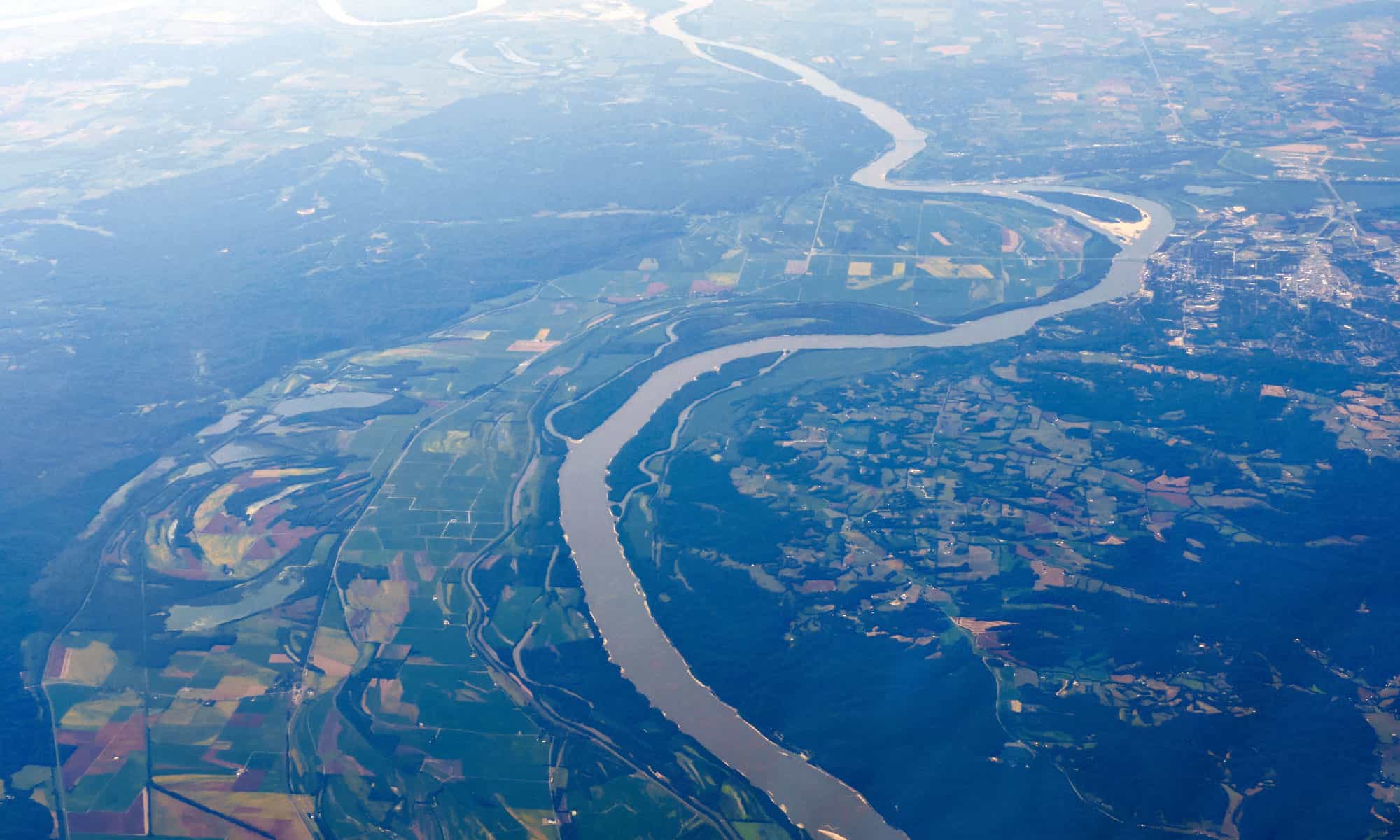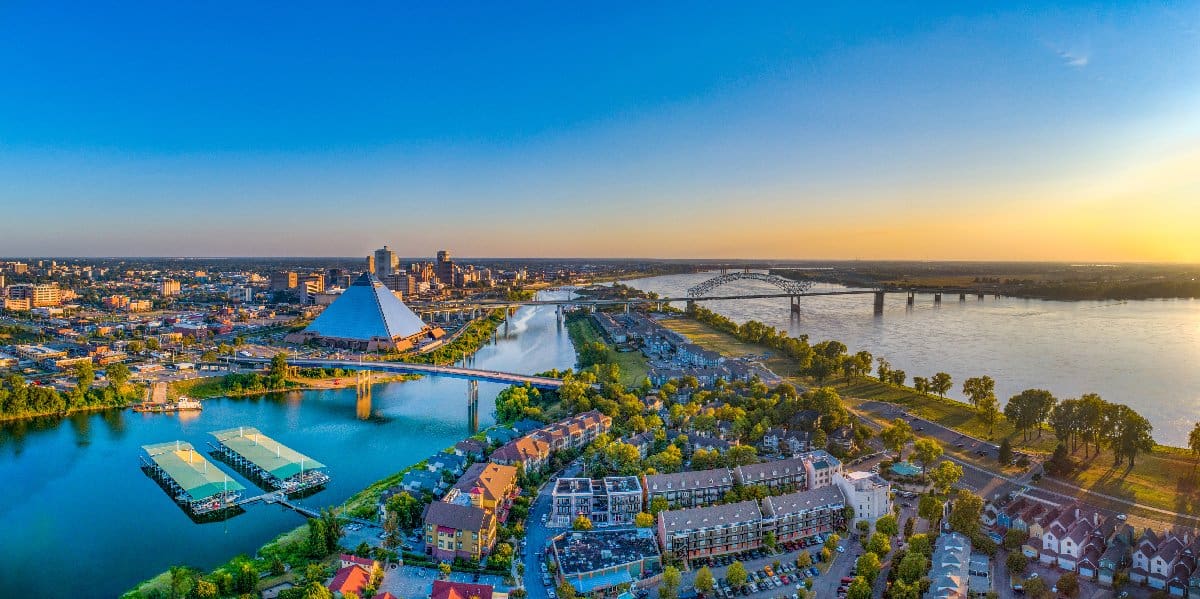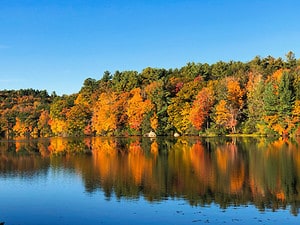The Mississippi River is experiencing an unprecedented drought. The water levels are at record-breaking lows after a dry summer in the Midwest. This has caused a back-up of river traffic as barges run aground. The U.S. Army Corps of Engineers has been called in to clear paths for these boats to transport vital harvest-time cargo along the most important water highway in the United States. That’s just one example of the possible devastating outcomes of the Mississippi drought.
Beyond the importance of the role that the Mississippi River plays in the U.S. shipping industry, it’s also an important freshwater source. The EPA states that over 50 cities rely on a daily water supply from the Mississippi. The bigger picture, though — over 133 million people located in the Mississippi River Watershed are dependent on it. But the drought has caused low water levels in over 40 river gauges throughout the basin.

The Mississippi River creates a rich habitat for a variety of mammals,
fish
, amphibians, and migratory birds.
©RaksyBH/Shutterstock.com
There’s another factor at play in this quandary. The Mississippi River creates a rich habitat for an abundance of wildlife including 50 mammal species, 241 fish species, and 45 amphibian species. Catfish, sturgeon, walleye, shrimp, and oysters inhabit its waters. An astounding 325 migratory bird species travel up and down the river from Canada and the northern U.S. to the Gulf of Mexico to breed. The Mississippi supports this kingdom of life. As it shrinks, the threat to this habitat grows.
Considering how vital the Mississippi River is to the U.S., regarding commerce and as a treasured natural resource, there is cause for concern. What are the most devastating outcomes that could arise from the Mississippi drought? Let’s take a more detailed look at the consequences that severe prolonged drought could have on the region.
A Brief History of the Mississippi River as a Natural Resource

The Mississippi River has been a valuable natural resource in North America for centuries.
©NPS/Gordon Dietzman / Public Domain – License
The Mississippi River has provided for human beings over centuries of time. It’s known that Native Americans used the river as a resource for fish, mussels, and freshwater, as well as transportation. When Europeans arrived and began exploring the full extent of all that the New World had to offer, settlers laid claim to land all along its banks, recognizing the enormous potential that this river offered. Traders began using the great waterway to transport goods, farmers converted the surrounding land to grow crops, and cities sprang up, creating ports for growing commerce.
As the scope of commerce has grown from the Industrial Revolution to today, the Mississippi River has gone through changes as mankind has shaped the river to meet its own commercial needs by adding federally funded levees and dikes and dredging the river. All in all, over 2,000 miles of the Mississippi watershed have been leveed. Currently, the Mississippi River system, including connecting tributaries, transports an estimated 460 million tons of freight annually.
Devastating Outcomes of the Mississippi Drought
Commerce

The U.S. agricultural industry depends on the Mississippi River for 92% of all its exports.
©iStock.com/Kruck20
The U.S. agriculture industry is dependent on the Mississippi River and Mississippi basin. They handle 92% of all agricultural exports. Those include 60% of U.S. grain exports and 78% of world exports in grain and soybeans. Specific products from that industry and beyond that make their way up and down the Mighty Mississippi include corn, animal feed, fertilizer, salt, alcohol, oil, gasoline, sand, and gravel. Other products transported by barges on the Mississippi and its tributaries, such as the Ohio River, are coal, aluminum, steel, iron, petroleum products, rubber, paper, coffee, and chemicals. This adds up to 3 trillion pounds or more of freight annually.
Currently, there’s a huge back-up of ships waiting to offload products at ports in the Gulf of Mexico. There are also over 1,000 barges sitting at dead stops along the river. This is because barges are running aground due to the record low levels of the river, in some places 11 feet lower than usual. Some barges are being required to offload part of their freight along the way to lighten their weight, forcing them to find storage options for the leftover cargo. In other cases, farmers are having to resort to more expensive solutions to transport their crops such as railroads or shipping from West Coast ports.
The cost of the Mississippi drought crisis is enormous. In the shipping industry alone, barge rates have increased by as much as 400% more than last year. The ultimate devastating outcome of the Mississippi drought is that it has already cost over $9 billion, and experts predict it will cost $20 billion!
Freshwater

The drought in the Mississippi River watershed affects over 50 cities that rely on it for daily supplies of water.
©Piyaset/Shutterstock.com
The Mississippi River provides 23% of the United States’s public surface water supplies. Over 50 cities in the basin, two of the larger being St. Paul and Minneapolis, rely on a daily supply of water. A drought of epic proportions could spell disaster for those that are dependent on it.
For example, the drop in water levels in the Mississippi River near its exit point into the Gulf of Mexico has caused a crisis for communities in Louisiana that depend on freshwater from the river. The reason is that saltwater from the ocean is now pushing its way upwards into the river’s mouth. The U.S. Army Corps of Engineers had to do damage control by creating a barrier of sediment across the riverbed to buy time. Hopes are that rain will come and bring back the pressure of the river’s downstream flow which normally prevents this from occurring.
Some communities have had to seek alternative sources of drinking water. In Iowa and Nebraska, there have been reports of drinking water wells drying up. While short-term droughts are part of the Mississippi River’s past, it’s not a sure thing that rain will return soon.
Scientists are predicting a weather phenomenon this coming winter known as La Niña. In the United States, La Niña would be characterized by cooler, wetter weather in the Pacific Northwest. Hotter, drier conditions characterize La Niña in the Southwest. This could exacerbate the drought, bringing it to a place where both commerce and fresh water are equally devastating problems.
Wildlife

Sea animals like shrimp and oysters are dying at unprecedented levels due to the current drought in the Mississippi River basin.
©burnettj/Shutterstock.com
Beyond the devastating financial effects of this drought, coupled with the threat to drinking water, the drought threatens basin wildlife. One problem is that fertilizer and manure accumulate on farmland when dry spells occur. When hard rains do finally come around, those toxic elements get washed into the rivers and streams, reducing oxygen levels. This can lead to fish and other aquatic animals dying off.
There are also dead zone areas created by drought, where non-swimming or weak-swimming animals are hard-pressed to relocate to find food sources, causing them to die as well. This is true of animals like shrimp and oysters, which are already perishing at unprecedented levels.
Past Droughts on the Mississippi River
Drought is not a new occurrence in the Midwest and Southwest regions of the U.S. which depend on the Mississippi River watershed. Below is a summary of some past severe droughts and the effects they had on these areas.
Drought of 2012
Rain measurements from May to August of 2012 were the lowest since 1895 along the Mississippi River. By September, over ¾ of the U.S. was experiencing drought. This led to $35 billion in direct losses to the U.S. That includes the closure of the Mississippi River to river traffic three times. Subsequently, the first U.S. National Drought Forum was formed to launch the Midwest Drought Early Warning System, which helps with future drought preparedness.
Drought of 1988
Due to record low water flows from warm, dry temperatures, coupled with low snow melt and shoaling, barge traffic was stopped along the Mississippi River during June and July of 1988. Barges were forced to lighten loads, shipping rates rose, and dredging was utilized to help barges travel. The barge industry lost over $1 billion.
Drought of the 1930s
Lack of rainfall, land erosion, and loose topsoil from farming led to a natural disaster. When winds picked up, they blew the topsoil into dense black clouds of dust. These dust storms blew throughout the Great Plains, reaching as far east as the Mississippi River, affecting that region as well. Cattle were choked to death, farmlands and crops were lost, and 60% of the population of that region was displaced.
Short-Term Solutions to the Mississippi River Drought
There are practical strategies being implemented to curtail the effects of this crisis in the short term. For example, the Tennessee Valley Authority has authorized the releasing of water from two of its dams–the Kentucky Dam on the Tennessee River and the Barkley Dam on the Cumberland River–to increase the water levels on the Mississippi River.
As far as the shipping industry goes, barges will need to continue lightening their loads, and dredging will still be practiced in helping them pass.
There’s one more thing that could help curb the devastating outcomes of the Mississippi drought. Pray for rain.
Up Next:
- How Was the Mississippi River Formed?
- Mississippi River Pollutants: What’s Ruining the Mississippi River?
- The Mississippi Drought Explained: Why Is the River Drying Up?
The photo featured at the top of this post is © RaksyBH/Shutterstock.com
Thank you for reading! Have some feedback for us? Contact the AZ Animals editorial team.






